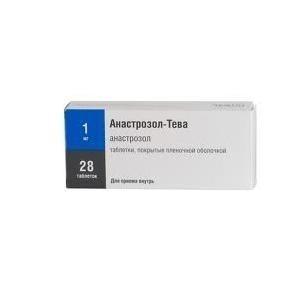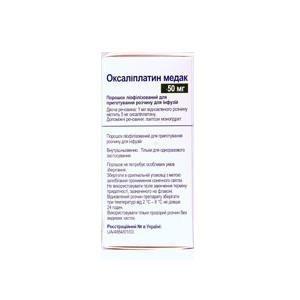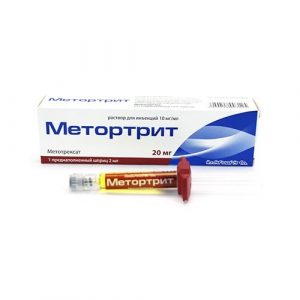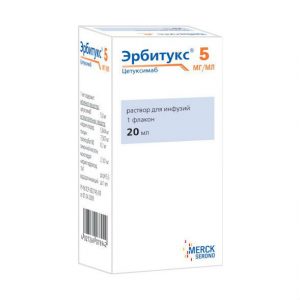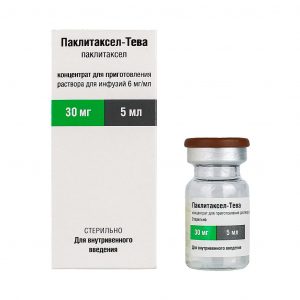Description
Release form
Film-coated tablets.
Packing
28 pcs.
Pharmacological action
Pharmacodynamics
Antitumor drug, an inhibitor of estrogen synthesis.
Anastrozole is a highly selective non-steroidal aromatase inhibitor, an enzyme with which in postmenopausal women, androstenedione in peripheral tissues is converted to estrone and then to estradiol. Reducing the concentration of circulating estradiol in patients with breast cancer has a therapeutic effect. In postmenopausal women, anastrozole in a daily dose of 1 mg causes a decrease in estradiol concentration by 80%.
Anastrozole does not have gestagenic, androgenic and estrogenic activity. In daily doses up to 10 mg does not have an effect on the secretion of cortisol and aldosterone, therefore, with the use of anastrozole, replacement administration of corticosteroids is not required.
Pharmacokinetics
Absorption and distribution of
After oral administration, anastrozole is rapidly absorbed from the gastrointestinal tract. Cmax in plasma is usually achieved within 2 hours after ingestion (on an empty stomach). Food slightly reduces the rate of absorption, but not its degree and does not lead to a clinically significant effect on plasma Css of the drug with a single dose of the daily dose of anastrozole.
After a 7-day administration of the drug, approximately 90-95% of Css anastrozole in plasma is reached. There is no information on the dependence of the pharmacokinetic parameters of anastrozole on time or dose. Binding to blood plasma proteins – 40%.
Metabolism and excretion
Anastrozole is extensively metabolized in postmenopausal women, with less than 10% excreted by the kidneys unchanged within 72 hours after taking the drug. T1 / 2 of anastrozole from blood plasma is 40-50 hours. Anastrozole metabolism is carried out by N-dealkylation, hydroxylation and glucuronidation. Anastrozole metabolites are excreted mainly by the kidneys. The main metabolite of anastrozole is triazole, determined in blood plasma, does not have pharmacological activity.
Pharmacokinetics in special clinical cases
The pharmacokinetics of anastrozole does not depend on the age of postmenopausal women.
The clearance of anastrozole after oral administration with liver cirrhosis or impaired renal function does not change.
Indications
Adjuvant therapy for early breast cancer with positive hormone receptors in postmenopausal women
first line therapy for locally advanced breast cancer, with positive or unknown hormonal receptors in postmenopausal women
second line cancer for advanced cancer treatment with tamoxifen.
Contraindications
Pre-pause period
severe liver failure (safety and efficacy not established)
concomitant therapy with tamoxifen or drugs containing estrogens
pregnancy
lactation period (breastfeeding unresponsiveness in children srd) to anastrozole or other components of the drug.
Caution: the drug should be prescribed for osteoporosis, hypercholesterolemia, ischemic heart disease, impaired liver function, severe renal failure (CC <20 ml / min), lactase deficiency, lactose intolerance, glucose / galactose malabsorption (lactose is contained in the dosage form). Use during pregnancy and lactation The drug is contraindicated during pregnancy and lactation. Composition 1 tablet contains: Active substances: anastrozole 1 mg. Excipients: lactose monohydrate (200 mesh), lactose monohydrate (spray dried), povidone K30, sodium carboxymethyl starch (type A), magnesium stearate. Composition of the film coat: white opadray 02G28619 (hypromellose (E464), titanium dioxide (E171), macrogol 6000, macrogol 400). Dosage and administration of The drug is taken orally. The tablet is swallowed whole, washed down with water. It is recommended to take the drug at the same time, regardless of the meal. Adults, including the elderly, are prescribed 1 mg orally 1 time / day for a long time. If signs of disease progression appear, the drug should be discontinued. As adjuvant therapy, the recommended treatment duration is 5 years. In case of impaired renal function, dose adjustment is not required. Dose adjustment in patients with mild to moderate hepatic impairment is not required. Side effects The frequency of adverse reactions listed below was determined according to the following criteria: very often (? 1/10) often (> 1/100, <1/10) sometimes (> 1/1000, <1/100) rarely (> 1/10 000, <1 / 1000) is very rare (<1/10 000), including single messages. From the cardiovascular system: very often – flushing of the face. From the side of the musculoskeletal system: very often – arthralgia rarely – trigger finger. From the reproductive system: often – dryness of the vaginal mucosa, vaginal bleeding (mainly during the first weeks after cancellation or replacement of previous hormonal therapy with anastrozole). Dermatological reactions: very often – skin rash often – thinning hair, alopecia are very rare – polymorphic erythema (Stevens-Johnson syndrome). From the digestive system: very often – nausea often – diarrhea, vomiting, anorexia. From the hepatobiliary system: increased activity of ALT, AST and alkaline phosphatase rarely increased activity of GGT and bilirubin concentration, hepatitis. From the nervous system: very often – headache often – increased drowsiness, carpal tunnel syndrome (mainly observed in patients with risk factors for this disease). From the side of metabolism: often – hypercholesterolemia. Taking the drug can cause a decrease in bone mineral density due to a decrease in the concentration of circulating estradiol, thereby increasing the risk of osteoporosis and bone fractures. Allergic reactions: often – allergic reactions are very rare – anaphylactoid reactions, angioedema, urticaria, anaphylactic shock. Other: very often – asthenia. Drug Interactions Studies of drug interactions with antipyrine and cimetidine indicate that clinically significant drug interactions mediated by isoenzymes of the cytochrome P450 system when anastrozole are used with other drugs are unlikely. There is no clinically significant drug interaction with the use of anastrozole simultaneously with other commonly prescribed drugs. At the moment, there is no information on the use of anastrozole in combination with other antitumor drugs. Drugs containing estrogens reduce the pharmacological effect of anastrozole, and therefore, they should not be prescribed simultaneously with anastrozole. Tamoxifen should not be prescribed simultaneously with anastrozole, since it can weaken the pharmacological effect of the latter. Storage conditions Keep out of the reach and sight of children, dry place at a temperature not higher than 25 ° C. Deystvuyuschee substance anastrozole Form of Treatment tablets Appointment for Adults on purpose doctor Indications Oncological diseases, pdrokfc th gland Possible product names ANASTROZOL-TEVA 0.001 N28 TABLE Post-production ANASTROZOL-TEVA TAB. P / O CAPTURE. 1MG No. 28 Anastrozole-Teva tablets 1 mg 28 pcs. Teva Pharmaceutical Enterprise Co., Ltd., Israel
